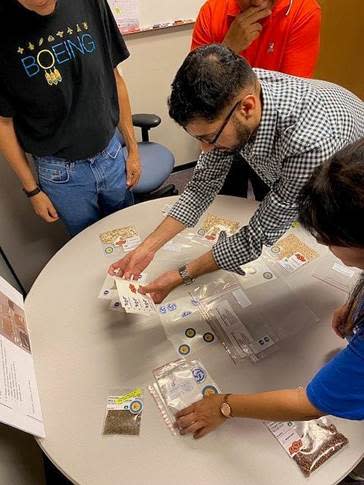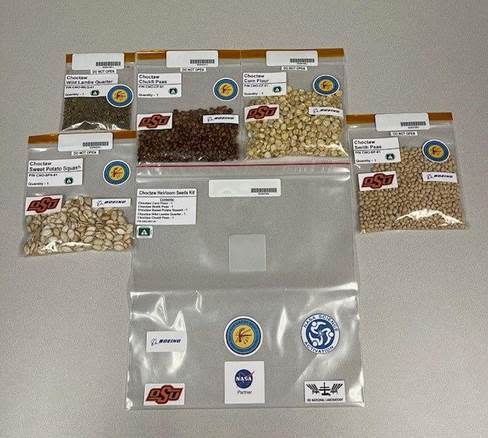Boeing, OSU, Choctaw Nation team up to advance STEM education from space

OKLAHOMA CITY (KFOR) – In a partnership with Boeing and Oklahoma State University, Choctaw Nation of Oklahoma heirloom seeds will fly to the International Space Station (ISS), then planted and studied upon their return to Earth.
After the seeds have flown on the space station for several months, they will return and be planted at Jones Academy, the boarding school for Native youth.
Tribes say they provide tag information to the state despite claims from Governor
The heirloom seeds heading to the ISS include:
Isito (Choctaw sweet potato squash)
Tobi (Choctaw Smith peas)
Tanchi Tohbi (Choctaw flour corn)
Tvnishi (Choctaw Lamb’s quarter)
Chukfi (Choctaw peas)
Choctaw heirloom seeds heirloom seeds refer to seeds that have been passed down through generations, often preserving unique and culturally significant varieties of crops.
With forced relocations from the southeastern United States, colonization and the disruption of Indigenous ways of life, many traditional agricultural practices and heirloom seed varieties have been threatened or lost. Efforts are underway to identify, collect and reintroduce these seeds into communities.
“The seeds represent centuries of Indigenous, particularly [Choctaw], culture,” said Anthony Chee, who leads the Boeing Employees Indigenous Network in Houston. “Most poignantly, they represent the sustainment of life and Native culture and provide hope and embody the spirit of learning.”
Amazon announces its first solar farm in Oklahoma



The seeds that flew in space will be grown in a Choctaw Nation Growing Hope garden next to a control group of the same type of seeds.
The Jones Academy students will make a prediction about the growth of the two groups of seeds and make scientific observations during the plants’ growing season in order to test their hypothesis.
OKCPS launches new community partnership model
“This project demonstrates the effective use of the ISS National Lab as it elevates Native culture and voices in a society where Native populations are underrepresented in STEM fields,” said Scott Copeland, director of Boeing ISS Research Integration. “We hope one outcome of this project is that more Native youth will be encouraged to pursue STEM careers.”
The story of the seeds’ travel and stay on the space station and the results of the students’ experiment will be incorporated into the middle school STEM curriculum being created for the NASA Science Activation program, Native Earth | Native Sky, at Oklahoma State University.
The curriculum will be available for free as an open educational resource in early 2024.
For the latest news, weather, sports, and streaming video, head to KFOR.com Oklahoma City.

